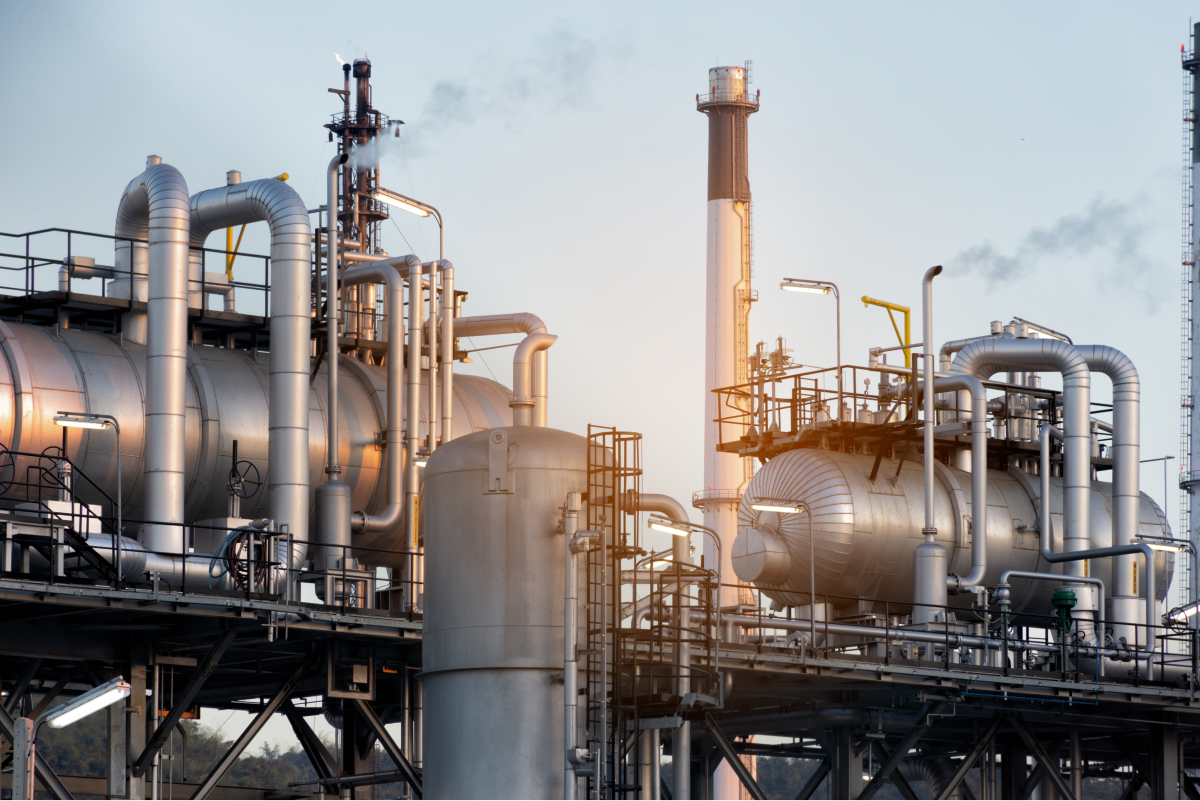Oil & gas projects move through a disciplined sequence of technical, commercial, and regulatory gates. This guide walks you from the first geological idea to steady-state production—highlighting key decisions, documents, risks, and how EPC/O&M partners like Geigerpipe help at each stage.
1) Basin Screening & Access
Goal: Identify prospective areas and secure the right to explore.
What happens: Basin studies, analogue field reviews, risked resource estimates, licence applications, and stakeholder mapping.
Key decisions: Country/acreage selection, fiscal terms, joint-venture structure.
Typical deliverables: Prospect inventory, risk register, work programme, licence bid.
2) Geological & Geophysical (G&G) Surveys
Goal: Reduce subsurface uncertainty.
What happens: 2D/3D seismic acquisition and processing, gravity/magnetics, surface geology, environmental baselines.
Key decisions: Drill or drop? Which prospect first?
Deliverables: Seismic interpretation, play maps, well location recommendations, ESIA scoping.
3) Exploration Drilling (Wildcat)
Goal: Test the presence of hydrocarbons.
What happens: Well planning, rig mobilisation, BOP testing, drilling to target depth, logging, coring, and well testing.
Key decisions: Discovery? Sidetrack? Plug & abandon?
Deliverables: Drilling programme, daily reports, well logs, DST results, end-of-well report.
Risks managed: HSE exposure, well control, cost overrun, unproven logistics.
4) Appraisal & Resource Classification
Goal: Size and quality of the discovery.
What happens: Step-out wells, pressure-volume-temperature (PVT) data, flow tests, dynamic modelling.
Key decisions: Commercial or not? Development concept options.
Deliverables: Reservoir model, contingent resource booking, appraisal report.
5) Concept Select (Pre-FEED)
Goal: Choose the best development route.
What happens: Options screening—tie-back vs. new facility; oil vs. gas handling; export route; power options; flaring minimisation; carbon footprint.
Key decisions: Preferred concept (technical & economic), schedule, HSE approach.
Deliverables: Basis of Design (BoD), concept report, cost-schedule class estimates, risked economics.
6) FEED & Permitting
Goal: Engineer the chosen concept to a level that locks scope and cost.
What happens: FEED packages for wells, facilities, pipelines/export, power, controls; detailed ESIA; land/ROW acquisition; long-lead item strategy.
Key decisions: Final Investment Decision (FID) readiness.
Deliverables: FEED deliverables, procurement plan, permitting dossiers, project execution plan (PEP).
7) Detailed Engineering & Procurement
Goal: Produce IFC (Issued for Construction) drawings and buy the kit.
What happens: Multi-discipline detailed design, vendor selection, technical bid evaluation (TBE), expediting, QA/QC planning, logistics.
Key decisions: Vendor awards, fabrication yards, inspection test plans (ITPs).
Deliverables: IFC drawings, data sheets, ITPs, MDR requirements, vendor documentation.
8) Well Design, Drilling & Completions (Development Phase)
Goal: Deliver safe, productive wells.
What happens: Well trajectories, casing/tubing design, completions hardware (packers, sleeves), sand control where needed, artificial lift planning.
Key decisions: Number of wells, completion type, lift method, simultaneous operations (SIMOPS).
Deliverables: Well delivery schedule, completions programmes, barrier diagrams, test certificates.
9) Facilities & Pipelines Construction
Goal: Build the surface infrastructure.
What happens: Civil foundations, structural steel, vessels and skids, E&I installation, metering, hazardous-area compliance; pipeline ROW, stringing, welding, NDT, coating, lowering-in, hydrotest, reinstatement.
Key decisions: Mechanical completion (MC) acceptance, punch categorisation (A/B/C).
Deliverables: Weld/NDT records, pressure test packs, loop folders, red-lines, turnover dossiers.
10) Pre-Commissioning, Commissioning & Start-Up
Goal: Prove systems safe and functional; hand over to operations.
What happens: Cleaning, flushing, drying; loop checks; instrument calibration; cause-and-effect tests; energisation; performance runs; flare minimisation plans; LDAR baseline.
Key decisions: Ready for hydrocarbons; performance acceptance.
Deliverables: Pre-com/commissioning procedures, signed ITPs, punch close-out, O&M manuals, handover certificates.
11) Operations & Maintenance (O&M)
Goal: Reliable, safe, compliant production.
What happens: CMMS-driven preventive maintenance, reliability improvements, spare-parts strategy, integrity inspections (UT/RT/MT/PT), corrosion control, TARs (turnarounds), digital dashboards for fuel/flare/leak KPIs.
Key decisions: Production optimisation vs. maintenance windows; debottlenecking; emissions reduction options.
Deliverables: Weekly/monthly KPIs, integrity reports, TAR plans and close-outs, emission inventories.
12) Decommissioning & Restoration (End of Life)
Goal: Leave assets safe and sites restored.
What happens: Plug & abandon wells, de-energise and dismantle facilities, waste management, site remediation, long-term monitoring as required.
Key decisions: Removal vs. in-situ options, regulatory compliance pathway, community engagement.
Deliverables: Decommissioning plan, permits, verification reports, closure certificates.
Gate Model (at a glance)
G0 Idea → G1 Licence → G2 Drill → G3 Appraise → G4 Select → G5 FEED → G6 FID → G7 Build → G8 Start-Up → G9 Operate → G10 Decommission
Each gate requires: updated risks, HSE plan, cost/schedule class, and stakeholder approvals.
Cost & Schedule Drivers to Watch
-
Subsurface uncertainty: Reservoir quality and fluids behaviour.
-
Logistics: Remote access, seasonality, ports, local content.
-
Critical path: Long-lead items, fabrication capacity, grid/offtake readiness.
-
HSE & permits: ESIA scope, community agreements, ROW acquisition.
-
Change control: Scope creep without re-baselining is a common cause of overruns.
How Geigerpipe Helps Across the Lifecycle
-
Select & FEED: Constructability reviews, flare-minimising start-up concepts, metering and controls strategy.
-
EPC Delivery: Pipelines/flowlines, modular process skids, E&I and metering, QA/QC, materials control.
-
Commissioning & Start-Up: Procedures, loop checks, performance runs, safe handover.
-
Asset Integrity & O&M: RBI programmes, NDT, corrosion control, LDAR and methane reduction, TAR planning and execution.
-
Digital & Reporting: CMMS deployment, digital ITPs/MDRs, dashboards for uptime and emissions.
-
CSR & Permitting Support: Community engagement inputs and environmental controls aligned to ISO 14001 principles.
Frequently Asked Questions
How long from discovery to first oil/gas?
Anywhere from 2–7+ years depending on reservoir complexity, infrastructure proximity, permitting, and funding.
Do all projects need new facilities?
No. Many developments tie back to existing hubs if capacity and distance allow.
Where do emissions reductions fit?
From concept select onward—through flare-minimising start-ups, efficient power, and methane control (LDAR, VRUs, pneumatics upgrades).
Final Word
Successful projects follow the sequence—de-risk early, engineer carefully, build safely, and operate with discipline. The best outcomes come when constructability, integrity, and environmental performance are embedded from concept to decommissioning.
